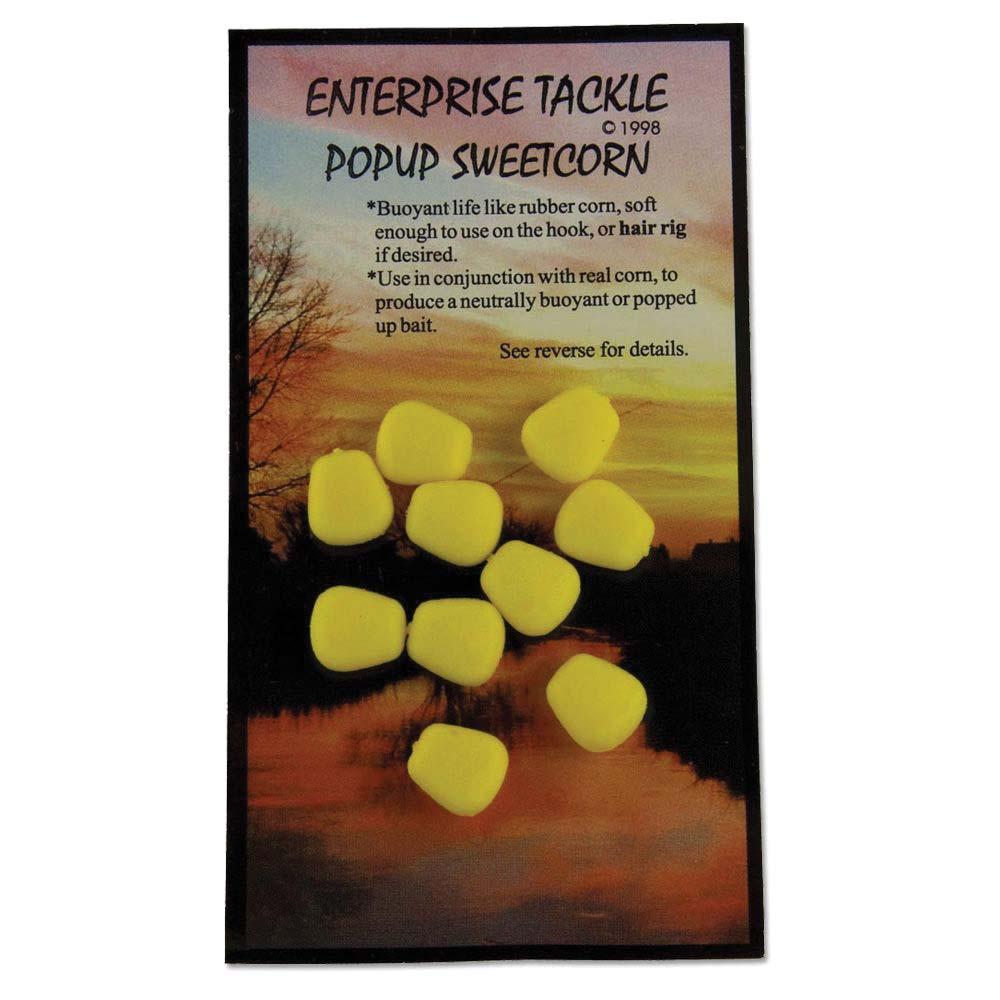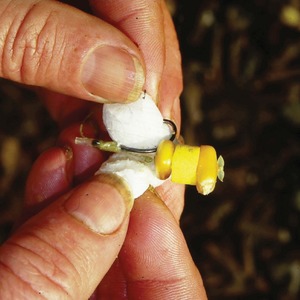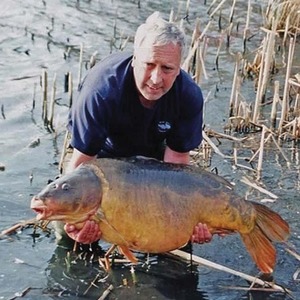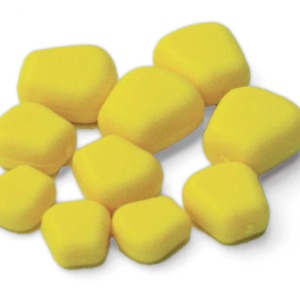Game-Changer: Artificial Sweetcorn
Launched in 1999, it certainly raised eyebrows and a few shrugged their shoulders...
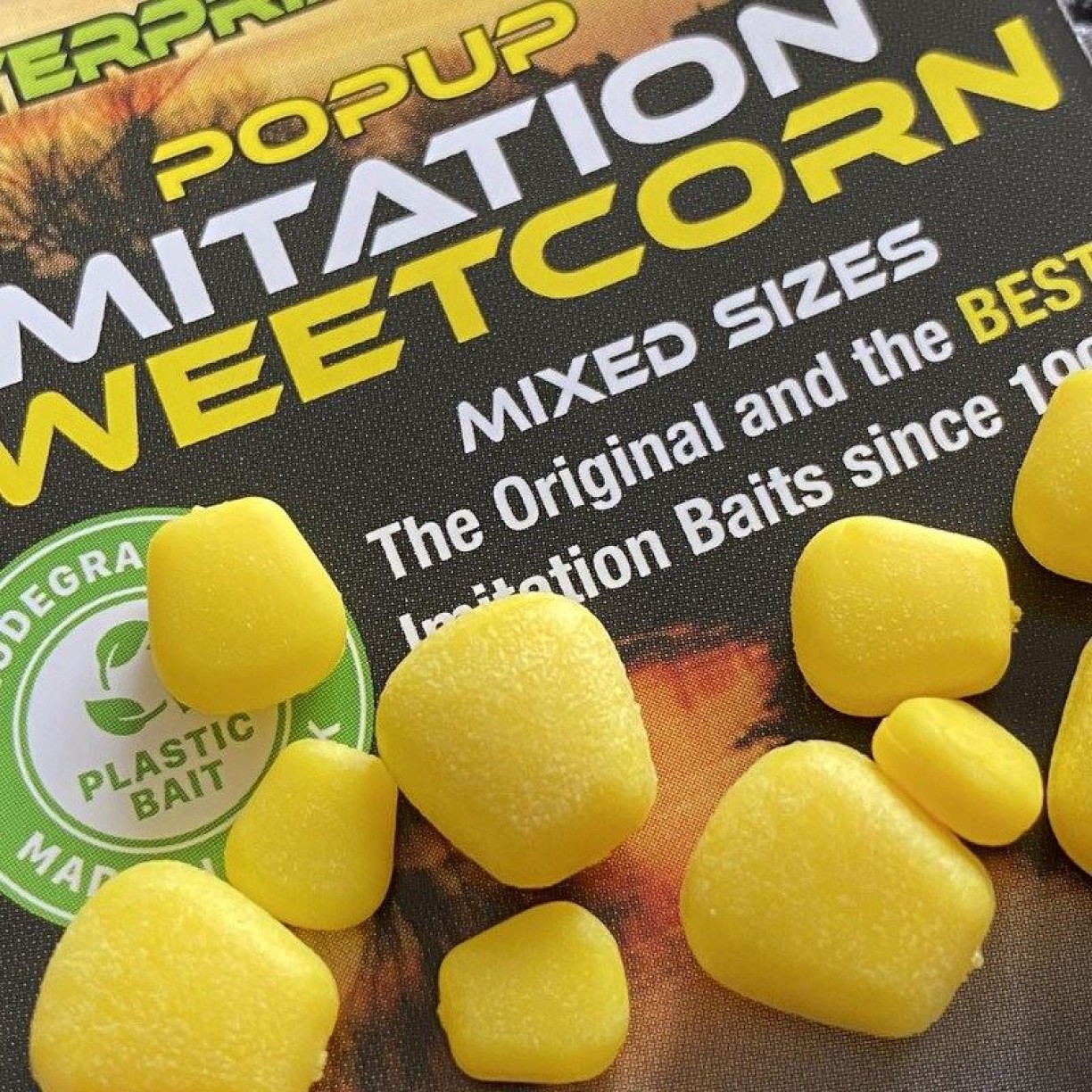
Launched in 1999 to a few raised eyebrows and a few shrugs of shoulders, Enterprise’s fake corn was a bit of a slow burner until Terry Glebioska used some of it to catch Two-Tone at a record weight of 59lb 7oz in 2001. He’d been put on to the ‘plastic fantastic’ by Lee Jackson in The Tackle Box in Kent, and his special capture was the confidence booster anglers needed to trust that carp would happily inhale ‘fake’ baits. Twenty-plus years on, Enterprises’s Popup (written without the hyphen) Sweetcorn is present in just about every carper’s tackle box. We chat with company owner, Chris Hornsby, to find out how the momentum grew…
CARPOLOGY: How and when did you come up with the idea of producing artificial sweetcorn?
CHRIS HORNSBY: “It was 1998, after seeing a Q&A in a magazine on how to pop-up sweetcorn using yellow rig foam. I knew we could produce something more realistic and user-friendly than this, but never dreamt it would prove as popular, or effective, as it has.”
CARPOLOGY: How much of an edge was it for you during those early years?
CHRIS HORNSBY: “A big one, although unfortunately for us, most anglers preferred to keep it to themselves, so initially, we didn’t get the publicity the product deserved.”
CARPOLOGY: Are we right in saying a big turning point for the company came when Terry Glebioska broke the British record with Two-Tone in 2001, caught on a piece of your fake corn?
CHRIS HORNSBY: “Yes, it definitely made anglers more aware of the benefits of our fake baits, and certainly raised our profile. We also had British record bream and grass carp caught on our baits in the following years, which further boosted our profile.”
CARPOLOGY: How many packets were selling before that capture, and how did it change once that news story broke?!
CHRIS HORNSBY: “Not that many, as we were relatively unknown back then, but we definitely saw a big increase after Terry’s record when anglers realised fake baits weren’t just a gimmick.”
CARPOLOGY: The reoccurring comment about fake sweetcorn in those early years was: ‘How do the carp find it attractive?’ So do you believe the colour grabs their attention, or do you think the actual plastic smell plays a part?
CHRIS HORNSBY: “I think it’s a combination of colour and the additives that we incorporate into the baits. I think it explains why they even work at night and in coloured water.”
CARPOLOGY: Now you and other companies produce flavoured fake sweetcorn, but in terms of sales, are these more or less popular than your regular corn
CHRIS HORNSBY: “Unflavoured yellow corn is still by far our biggest seller despite us offering a huge amount of flavoured options. However, I know many think the flavoured versions are more effective, including our own consultant, Frank Warwick, who, after extensive testing, now always uses flavoured corn.”
CARPOLOGY: How long did it take before the rest of the angling industry jumped on the bandwagon and started producing artificial sweetcorn?
CHRIS HORNSBY: “Luckily for us, it was several years before any of the big names copied it, by which time our name was well established and synonymous with imitation bait.”
35 million plus. The number of pieces of rubber sweetcorn Enterprise Tackle has sold since 1999
CARPOLOGY: Did the glow-in-the-dark corn ever take off as you hoped?
CHRIS HORNSBY: “Maybe not as well as expected. I think for many anglers, it is still a step too far to cast out a glowing hookbait. When you think about it though, most anglers are happy to use a bright pop-up during daylight, so why not make your hookbait stand out during darkness? It’s certainly worth a try and is very effective on certain waters.”
CARPOLOGY: From your customer and consultant feedback, has the way fake corn is used changed over the decades? I.e. In the early years, most used two pieces on the Hair, but in 2023, is it now used in conjunction with a boilie—i.e. tipped?
CHRIS HORNSBY: “Originally, many anglers used it in conjunction with real corn for extra confidence, before realising it was equally effective used on its own. But yes, I think today more anglers tip a boilie with it to add extra visual attraction, and to help counteract the weight of the boilie.”
